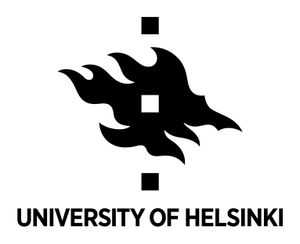Potential novel lymphangiogenic growth factor therapy for glaucoma
Glaucoma is the second leading cause of blindness worldwide today. In glaucoma, aqueous humor outflow into the Schlemm’s canal is obstructed, which increases pressure within the eye. High intraocular pressure is detrimental for neurons that conduct visual signals into the brain and can even lead to blindness. Treatment of glaucoma is based on lowering intraocular pressure, which slows the progressive loss of vision.
The Schlemm’s canal is a vessel that runs a full circle at the base of the iris. Aqueous humor flows out via this canal. Schlemm’s canal has generally been considered a blood vessel.
Aleksanteri Aspelund and his collagues from Wihuri Research Institute and University of Helsinki have found in an article published in The Journal of Clinical Investigation that the Schlemm’s canal displays many features characteristic of a lymphatic vessel. The researchers discovered that lymphangiogenic growth factors may be applied to grow Schlemm’s canal, which reduced intraocular pressure.
When successful, the reduction in intraocular pressure after a single growth factor injection was presistent, and apparent for months after injection. - Current glaucoma therapy requires administration of eye drops several times per day. As a result, patient compliance is sometimes poor, which explains lack of treatment efficacy.
– The basic finding that Schlemm’s canal displays many features of lymphatic endothelium was very promising. However, we went one step further and asked how this inherent feature can be exploited in the treatment of glaucoma, tells Aleksanteri Aspelund
– Lymphangiogenic growth factors could be a novel method for glaucoma treatment. These results, however, form only the first step in the development of such treatment. The results will have to be repeated in animal models that better resemble humans, and if treatment is efficacious and and safe, only then could it be tried for the treatment of human patients.
For further information:
Professor Kari Alitalo, tel. +358 50 500 3572, e-mail kari.alitalo@helsinki.fi
Aleksanteri Aspelund, tel. +358 40 825 5788, e-mail aleksanteri.aspelund@helsinki.fi
Keywords
Contacts
Anna Maria Peltonen
MA, Science Communicator
Communications and Community Relations
University of Helsinki
Tel. +358 50 406 2047, e-mail maria.peltonen@helsinki.fi
About University of Helsinki
 University of Helsinki
University of HelsinkiP.O. Box 4 (Yliopistonkatu 3)
00014 University of Helsinki, Finland
http://www.helsinki.fi/en
The University of Helsinki is one of the world’s leading multidisciplinary research universities, renowned for its high-quality teaching, research and innovation. It is proud to be constantly ranked among the top one hundred best universities in the world.
The university has an enrollment of over 35 000 students and it offers a wide range of Master’s programmes taught in English. Established in 1640, the University of Helsinki is the oldest university in Finland.
Subscribe to releases from University of Helsinki
Subscribe to all the latest releases from University of Helsinki by registering your e-mail address below. You can unsubscribe at any time.
Latest releases from University of Helsinki
AI boom requires new benchmarks for natural language understanding6.2.2024 08:00:00 EET | Press release
Aarne Talman’s timely research delves into the meaning of language understanding, its measurement and the weaknesses of current measurement benchmarks.
The Helsinki Collegium for Advanced Studies is a home base for international researcher encounters and a pioneer in the humanities and social sciences in Finland10.6.2022 09:00:00 EEST | Press release
The Helsinki Collegium for Advanced Studies at the University of Helsinki celebrates its 20th anniversary on 15 June, with star philosopher Martha Nussbaum as the anniversary speaker.
Globalization, Sustainability and the War in Ukraine - How does sustainability science explain past and future trajectories?31.5.2022 08:54:56 EEST | Press release
In February 2022, the global peace was shattered by the Russo-Ukrainian conflict that escalated into aggressive Russian invasion into Ukraine. While the situation is widely discussed in the media, not much attention has been given to the perspectives of sustainability science.
University of Helsinki's new open AI in Society MOOC will consider technology´s issues and challenges30.5.2022 09:03:41 EEST | Press release
University of Helsinki's Una Europa AI in Society Massive Open Online Course (MOOC) creates critical awareness of the basics of AI and its related ethical issues as well as its impacts on different sectors of society, including justice and jurisprudence, health care, and democratic participation. The MOOC examines how society could cope with these issues, and how the societal impact and relevant values can be considered in design, implementation, and deployment of AI.
University of Helsinki offers online course Ethics of AI in Finnish and Swedish23.11.2021 09:00:00 EET | Press release
The open and free online course Ethics of AI is designed to help us understand what it means to use AI ethically, and what it requires from society and individuals. The course uses examples of practical issues from its collaboration partners.
In our pressroom you can read all our latest releases, find our press contacts, images, documents and other relevant information about us.
Visit our pressroom